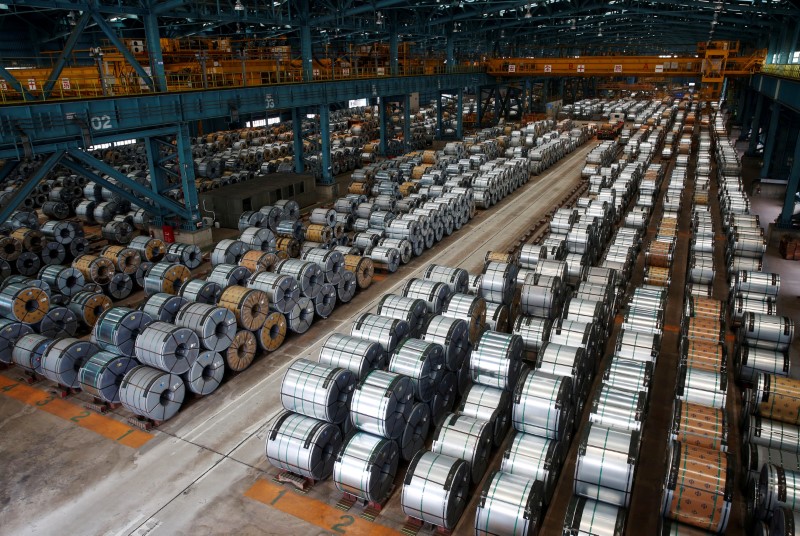BEIJING (Reuters) - China's factory activity picked up more than expected in December as demand accelerated, with output reaching a near six-year high, a private business survey showed on Tuesday, giving the manufacturing sector a solid boost heading into 2017.
The Caixin/Markit Manufacturing Purchasing Managers' index (PMI) rose to 51.9 on a seasonally adjusted basis, from 50.9 in November and easily beating analysts' forecasts of 50.7.
The index has been slowly building momentum thanks to a lending and construction boom, and has now been above the 50-point neutral level which separates expansion in activity from contraction for six straight months.
Output rose at the fastest pace since January 2011, with a reading of 53.7, and new orders also increased significantly, though companies continued to cut staff and at a slightly faster rate from November.
Order growth was fueled by stronger domestic demand as new export orders remained sluggish.
The private survey tends to focus more on small and mid-sized Chinese firms, which have had a harder time gaining traction than larger, state-backed firms.
An official factory survey on Sunday showed activity in the sector expanded for a fifth month in December, though growth slowed a touch more than expected as government measures to rein in soaring asset prices start to have an effect on the broader economy.
After a rocky start to the year, China's economy looks set to hit Beijing's 2016 growth target of 6.5 to 7 percent, after expanding 6.7 percent for each of the first three quarters.
Data last week showed profits at industrial companies rose at the fastest pace in three months in November, with the extra income offering some relief for the many debt-laden companies in smokestack industries.
Profits in November rose 14.5 percent to 774.6 billion yuan ($111 billion) from a year earlier, the highest since August's record 19.5 percent spike, National Bureau of Statistics (NBS) said.
Prices charged by Chinese manufacturers for their goods increased for the 10th straight month, boding well for profit margins.
"The Chinese manufacturing economy continued to improve in December...," Zhengsheng Zhong, director of macroeconomic analysis at CEBM Group, said in a note with the report.
"However, it is still to be seen if the stabilization of the economy is consolidated due to uncertainties in whether restocking and consumer price rises can be sustainable."
China's industrial sector has benefited this year from infrastructure and housing spending, which has spurred demand for materials from cement to steel. Reductions in excess capacity have further buoyed prices of raw materials.
But despite the rebound, most analysts say the economy will face challenges in 2017 as the impact of previous stimulus wears off and as the property sector slows. Auto sales could also slow from double-digit growth seen this year.
There are also signals from China's top leaders that more will be done in 2017 to crack down on asset bubbles and tackle a mountain of debt, even at the expense of slower growth, meaning additional stimulus measures could be limited.
China's massive export sector also faces risks next year after the surprise election of Donald Trump as the next U.S. president. Trump has threatened tariffs on Chinese imports.

The Chinese government should set a more flexible target for economic growth this year to give more space for reform efforts, a central bank adviser told the official Xinhua news agency in comments published on Sunday.